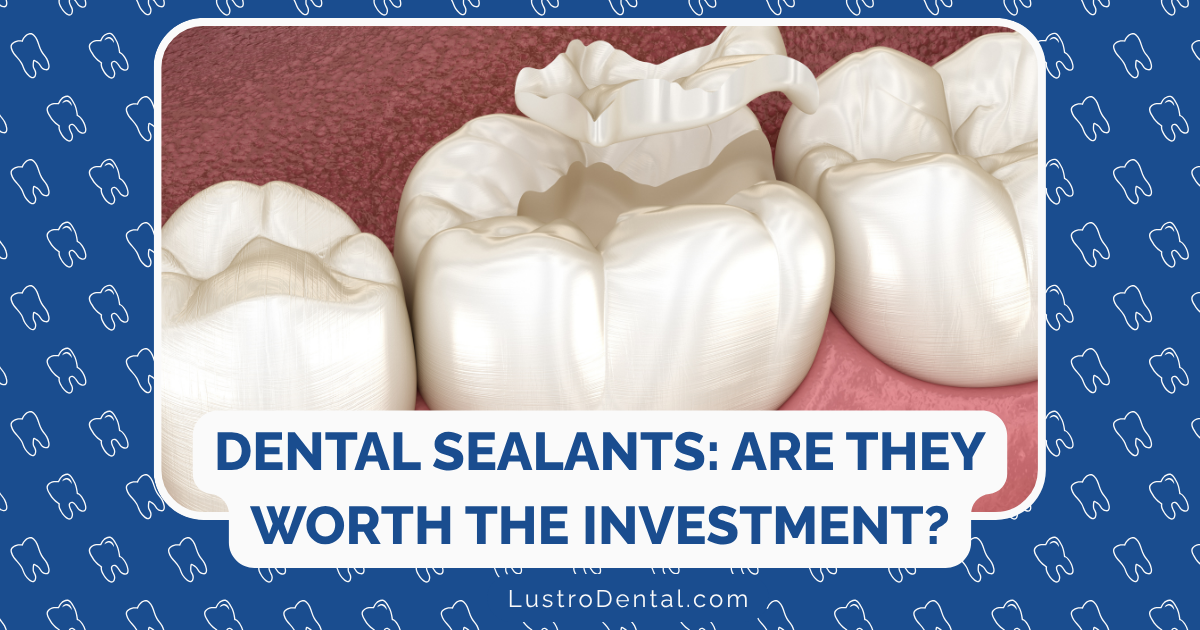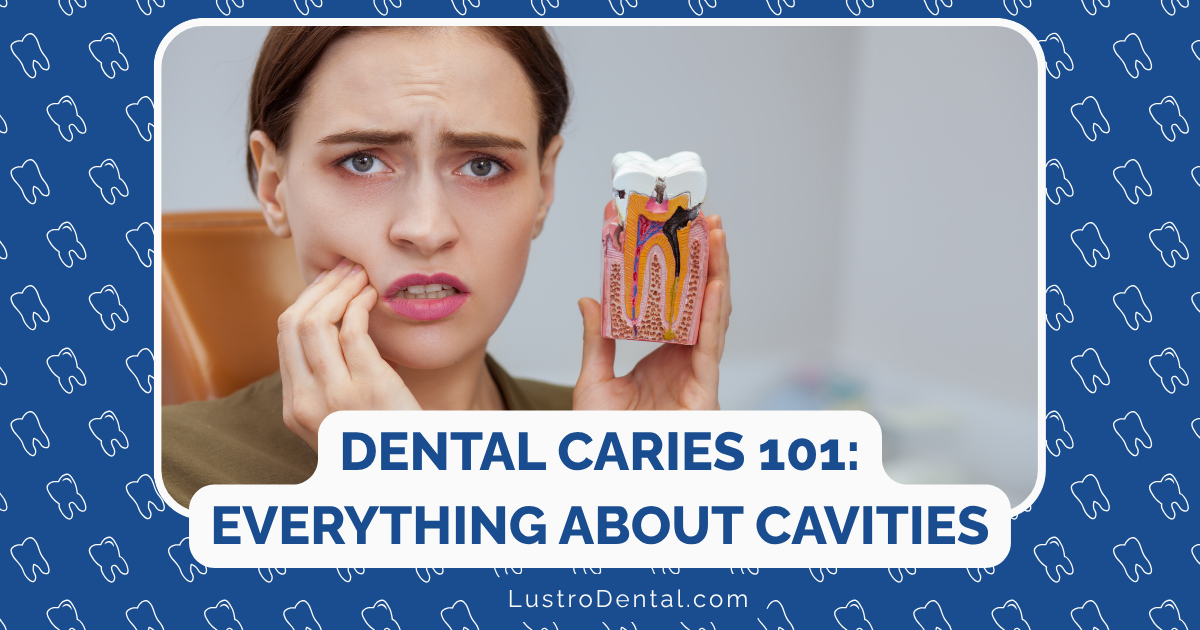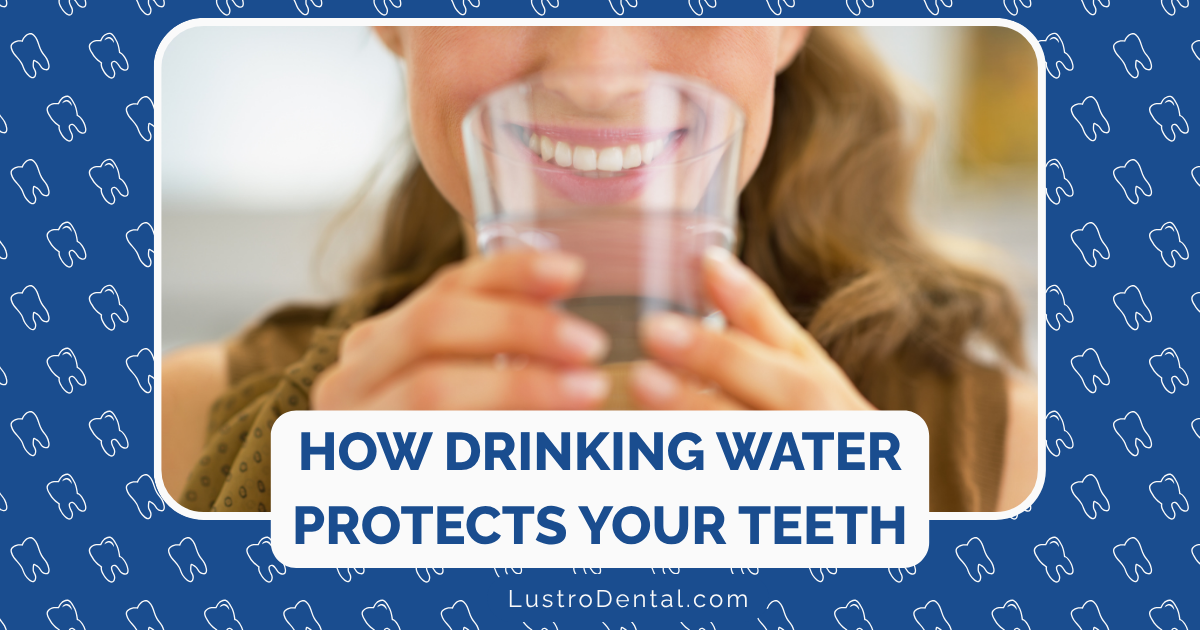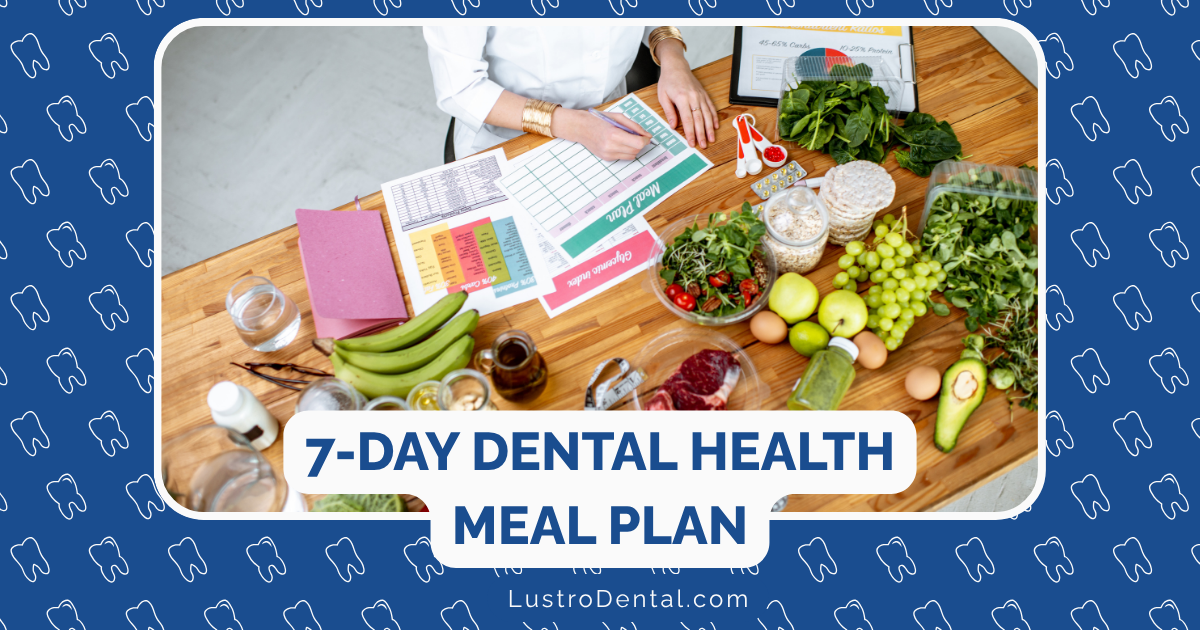Are Dental Sealants Worth It? Cost vs. Benefit Analysis for 2025

When it comes to preventive dental care, dental sealants often spark debate among patients and even some dental professionals. Are they a worthwhile investment or an unnecessary expense? As we navigate the dental landscape of 2025, this question becomes increasingly relevant as healthcare costs continue to rise and patients seek the most value from their preventive care dollars.
In this comprehensive analysis, we’ll examine the costs, benefits, effectiveness, and long-term value of dental sealants to help you make an informed decision about whether they’re worth it for you or your family members.
What Are Dental Sealants? A Quick Refresher
Before diving into the cost-benefit analysis, let’s briefly review what dental sealants are and how they work.
Dental sealants are thin, protective coatings (typically made of resin or glass ionomer cement) that are applied to the chewing surfaces of the back teeth—premolars and molars—where decay most often occurs. These surfaces contain deep grooves and pits where food particles and bacteria can hide, making them difficult to clean effectively with brushing alone.
The sealant material flows into these grooves and hardens, creating a smooth, protective barrier that shields the tooth surface from plaque and acids that cause decay.
“Think of sealants as raincoats for your teeth,” explains Dr. Sarah Chen, a pediatric dentist at Columbia University. “They provide a protective layer that keeps cavity-causing bacteria from settling into the natural grooves of your teeth.”
The Cost Equation: What to Expect in 2025
Direct Costs of Dental Sealants
In 2025, the cost of dental sealants typically ranges from $30 to $60 per tooth, according to the latest dental fee surveys. For a complete set of first molars (four teeth), you might expect to pay between $120 and $240.
Factors affecting the cost include:
- Geographic location: Urban areas generally have higher costs than rural areas
- Dental provider type: Specialists may charge more than general dentists
- Practice setting: Private practices often charge more than dental schools or community health centers
- Material used: Resin-based sealants versus glass ionomer sealants
- Additional services: Some offices include preparation steps in their fee, while others charge separately
“The upfront cost of sealants can seem significant, especially when multiplied across several teeth,” notes dental office manager Jennifer Marsh. “However, it’s important to consider this expense in the context of what you might spend without this preventive measure.”
Insurance Coverage in 2025
The good news is that dental insurance coverage for sealants has improved in recent years:
- Children and adolescents: Most dental insurance plans cover sealants at 80-100% for patients under 18, typically limiting coverage to permanent molars and sometimes premolars
- Adults: Coverage varies widely, with some plans offering partial coverage for adults with high cavity risk, while others provide no coverage
- Medicaid and CHIP: All states now cover sealants for children, though age restrictions and reapplication policies vary
- Preventive-focused plans: Some newer insurance models emphasize preventive care, offering enhanced coverage for sealants as part of their focus on long-term cost reduction
“We’re seeing a positive trend in insurance coverage for sealants,” says Dr. Michael Rodriguez, DDS. “Insurance companies are increasingly recognizing that paying for prevention now saves them money on more expensive treatments later.”
Hidden Costs of Not Getting Sealants
To truly understand the cost equation, we need to consider what you might spend if you forego sealants:
- Fillings: $150-$350 per tooth for composite fillings
- Root canals: $700-$1,500 per tooth, depending on which tooth needs treatment
- Crowns: $1,000-$2,500 per tooth
- Extractions and replacements: $2,000-$6,000 per tooth for extraction plus implant
Beyond these direct costs, consider the indirect expenses:
- Time off work or school for dental appointments
- Transportation costs
- Potential pain and discomfort
- Anxiety and stress related to more invasive procedures
“When patients decline sealants due to cost concerns, I always explain that prevention is almost always less expensive than treatment,” emphasizes Dr. Lisa Warren, a prosthodontist. “A $40 sealant today could prevent a $1,000 crown tomorrow.”
The Benefit Equation: Short and Long-Term Advantages
Effectiveness in Preventing Cavities
The primary benefit of dental sealants is their effectiveness in preventing tooth decay. According to the latest research:
- Sealants reduce decay in permanent molars by 80% for 2 years after placement
- They continue to protect against 50% of cavities for up to 4 years
- Some protection continues for up to 9 years
A landmark 2025 study published in the Journal of the American Dental Association found that children with sealed molars had three times fewer cavities over a five-year period compared to children without sealants.
“The effectiveness of sealants is well-established through decades of research,” notes Dr. Chen. “Few preventive dental interventions show such consistent and significant benefits.”
Longevity and Durability
How long do sealants last? This is a crucial factor in determining their value:
- Average lifespan: 5-10 years with proper care
- Retention rates: Studies show approximately 70% remain fully intact after 2 years, 50% after 5 years
- Reapplication needs: About 5-10% of sealants may need replacement annually
A 2025 longitudinal study published in AJPM Focus tracked 1,000 seven-year-olds with recently sealed first molars over a 10-year period. Without resealing, only 35% of teeth retained sealants after 10 years. However, with strategic resealing at the first dental visit after loss, retention improved to 43%.
“Sealants aren’t permanent, but neither are most dental interventions,” explains Dr. Rodriguez. “The key is regular dental check-ups where your dentist can monitor sealant integrity and reapply when necessary.”
Pain-Free Prevention
Unlike many dental procedures, sealant application is:
- Non-invasive (no drilling required)
- Painless (no anesthesia needed)
- Quick (typically 5-10 minutes per tooth)
- Comfortable (no post-procedure sensitivity)
“For patients with dental anxiety, sealants offer an ideal preventive option,” says dental hygienist Marsh. “The procedure is so gentle that even the most anxious patients typically have no issues.”
Cost-Benefit Analysis: The Numbers
Let’s examine the cost-effectiveness of dental sealants through various analytical lenses:
Cost Per Prevented Cavity
Research from 2025 provides compelling data on the cost-effectiveness of sealants:
- The cost per averted cavity with sealants ranges from $40-$60
- By comparison, the cost of treating a cavity starts at $150 and can escalate significantly if the decay progresses
The AJPM Focus study mentioned earlier found that the cost per averted cavity for the most effective resealing scenario (at the first dental visit after loss) was $43.03.
“When you consider that preventing a single cavity saves at least $150, the return on investment becomes clear,” notes Dr. Warren. “Preventing three cavities with four sealants already puts you ahead financially.”
Long-Term Cost Savings
Looking at longer time horizons makes the value proposition even more compelling:
- A 2025 economic analysis published in the Journal of Public Health Dentistry found that for every $1 spent on sealants, approximately $4.76 was saved in treatment costs over 10 years
- For high-risk patients, the savings were even greater—$6.29 saved for every $1 spent
“The economic case for sealants strengthens when we look at lifetime costs,” explains Dr. Chen. “A tooth that never develops decay avoids not just the initial filling, but the replacement fillings, potential root canals, and eventual crowns that often follow.”
Public Health Perspective
From a broader public health standpoint, sealants offer remarkable value:
- School-based sealant programs save society an estimated $300 million in dental treatment costs annually
- These programs are particularly beneficial for children from low-income households, who are 20% less likely to have sealants but have nearly twice the rate of untreated decay
“When we look at dental sealants through a public health lens, the cost-benefit ratio is extraordinarily favorable,” notes Dr. Rodriguez. “Few interventions offer such clear return on investment while simultaneously reducing health disparities.”
Comparing Populations: Are Sealants Worth It for Everyone?
The value proposition of dental sealants varies somewhat depending on the patient population. Let’s break it down:
Children and Adolescents (Ages 6-14)
For this age group, the case for sealants is strongest:
- Risk level: High, as newly erupted permanent molars are most susceptible to decay
- Cost-effectiveness: Highest, with studies showing 80-90% effectiveness in cavity prevention
- Insurance coverage: Best, with most plans covering sealants for this age group
- Long-term value: Maximum, as early prevention sets the stage for lifetime dental health
“For children, sealants are almost always worth it,” states Dr. Chen emphatically. “The combination of high effectiveness, good insurance coverage, and long-term benefits creates an extremely compelling case.”
Teens and Young Adults (Ages 15-25)
The value remains strong but with some caveats:
- Risk level: Moderate to high, especially for those with a history of cavities
- Cost-effectiveness: Good, though slightly lower than for younger children
- Insurance coverage: Variable, with coverage often ending at age 18
- Long-term value: Strong, particularly for those with deep grooves or history of decay
“For teens and young adults, the decision becomes more individualized,” explains Dr. Warren. “Those with a history of cavities or deep grooves in their teeth will benefit most from sealants.”
Adults (Ages 26+)
For adults, the decision requires more careful consideration:
- Risk level: Varies widely based on individual factors (diet, oral hygiene, cavity history)
- Cost-effectiveness: Moderate, with benefits most pronounced in high-risk individuals
- Insurance coverage: Limited, with many plans offering no coverage for adult sealants
- Long-term value: Present but diminished compared to younger populations
“For adults, we recommend a risk-based approach,” advises Dr. Rodriguez. “Those with deep grooves, recurrent decay, or risk factors like dry mouth will likely find sealants worth the investment, while those with shallow grooves and no history of decay might not see the same return.”
Beyond the Numbers: Qualitative Considerations
While the quantitative analysis strongly supports sealants in many cases, several qualitative factors should also influence your decision:
Peace of Mind
The psychological benefit of knowing you’ve taken proactive steps to prevent dental problems shouldn’t be underestimated.
“Many of my patients express relief after getting sealants,” notes dental hygienist Marsh. “There’s significant value in the peace of mind that comes from knowing you’ve reduced your risk of painful and expensive dental problems.”
Reduced Dental Anxiety
For those with dental anxiety, preventing the need for more invasive procedures like fillings and root canals has immense value that’s difficult to quantify monetarily.
“Patients with dental anxiety often find the investment in sealants particularly worthwhile,” says Dr. Chen. “Preventing the need for drilling and anesthesia is priceless for many anxious patients.”
Time Savings
Prevention almost always requires less time in the dental chair than treatment.
“When you factor in the time spent on multiple appointments for fillings, root canals, or crowns, the few minutes required for sealant application represents significant time saved,” explains Dr. Warren.
Potential Drawbacks and Limitations
A balanced analysis must acknowledge the potential drawbacks of dental sealants:
Not a Complete Solution
“Sealants only protect the chewing surfaces of teeth,” cautions Dr. Rodriguez. “They don’t prevent decay on the sides of teeth or between teeth, so regular brushing, flossing, and fluoride use remain essential.”
Technique Sensitivity
The effectiveness of sealants depends significantly on proper application technique.
“Sealants must be applied under ideal conditions by skilled providers,” notes Dr. Chen. “Improperly placed sealants may fail prematurely or, in rare cases, seal in existing decay if the tooth isn’t properly cleaned beforehand.”
Potential for False Security
Some patients mistakenly believe sealants make them “cavity-proof.”
“We sometimes see patients with sealants developing a false sense of security that leads to neglect of other aspects of oral hygiene,” warns dental hygienist Marsh. “Sealants are one tool in the prevention toolkit, not a replacement for comprehensive care.”
Environmental Considerations
Some patients have concerns about the environmental impact of dental materials.
“The dental industry is working to develop more environmentally friendly sealant materials,” acknowledges Dr. Warren. “For environmentally conscious patients, this is a factor worth discussing with your dental provider.”
Making the Decision: A Personalized Approach
Given the variables involved, how should you decide whether dental sealants are worth it for you or your family members in 2025? Consider this framework:
1. Assess Individual Risk Factors
Work with your dentist to evaluate:
- Tooth anatomy: Deep, narrow grooves benefit more from sealants than shallow, wide grooves
- Decay history: Previous cavities increase the value of preventive sealants
- Diet: Frequent consumption of sugary foods and drinks increases cavity risk
- Oral hygiene: Difficulty maintaining optimal cleaning increases sealant value
- Saliva flow: Reduced saliva (dry mouth) increases decay risk and sealant benefit
2. Consider Age and Tooth Eruption Timing
- For children, the optimal timing is soon after the eruption of permanent molars (typically around ages 6 and 12)
- For adults, sealants can be beneficial at any age if risk factors are present
3. Evaluate Insurance Coverage
- Check your specific plan details for coverage limitations
- Consider timing sealants to maximize insurance benefits
- For adults without coverage, weigh the out-of-pocket cost against your personal risk assessment
4. Discuss Longevity Expectations
“Have a frank discussion with your dentist about how long sealants might last in your specific case,” recommends Dr. Rodriguez. “This helps set realistic expectations and informs your cost-benefit calculation.”
5. Consider Family History
“Dental decay has both behavioral and genetic components,” explains Dr. Chen. “A strong family history of cavities may indicate higher personal risk, making sealants more valuable.”
The Verdict: Are Dental Sealants Worth It in 2025?
Based on the comprehensive analysis of costs, benefits, effectiveness, and limitations, here’s our assessment:
For Children (Ages 6-14):
Verdict: Almost always worth it
The combination of high effectiveness, good insurance coverage, and maximum long-term benefit makes sealants an excellent investment for most children, particularly at the time of molar eruption. The cost-benefit ratio is extremely favorable, and the potential to prevent years of dental problems makes sealants one of the best values in preventive healthcare.
For Teens and Young Adults (Ages 15-25):
Verdict: Generally worth it, especially with risk factors
While the benefit may be slightly reduced compared to younger children, sealants still represent a good value for most teens and young adults, particularly those with deep grooves or a history of decay. Insurance coverage becomes more variable in this age range, so cost considerations may play a larger role in the decision.
For Adults (Ages 26+):
Verdict: Selectively worth it, based on individual risk
For adults, the value proposition depends heavily on individual risk factors. Those with deep grooves, a history of decay, dry mouth, or other risk factors will likely find sealants worth the investment, even without insurance coverage. Those with shallow grooves and no history of decay might not see the same return on investment.
Final Thoughts: Prevention as an Investment
“In dentistry, as in many areas of healthcare, an ounce of prevention is worth a pound of cure,” concludes Dr. Warren. “Dental sealants represent one of the most effective preventive interventions available, with a cost-benefit ratio that few other treatments can match.”
As we navigate the healthcare landscape of 2025, with its emphasis on preventive care and value-based treatments, dental sealants stand out as a preventive measure that truly delivers on its promise—protecting teeth from decay while potentially saving patients significant money, time, and discomfort in the long run.
The decision ultimately comes down to your specific circumstances, risk factors, and values. By working with your dental provider to assess your individual situation, you can make an informed choice about whether dental sealants are worth it for you or your family members.







